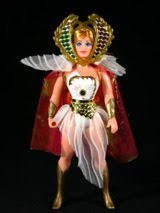
This is a good chapter book for early readers. Children who have just moved or are part of a military family would really be able to relate to the story. The book is a little but long (160 pages) but the simple text is meant for younger readers. The main character is 9, so I would say kids older than this would most likely think it was too immature for them.
The book tells a humorous story of a girl named Piper and her family. Her mother is a painter and her father is in the Navy, so the family is always traveling from place to place. Piper has to learn to adjust to a new place and finds a lot of adventure along the way.
The story talks about a lot of things that kids can relate to and seems to be very true to life - bossy older siblings, whiny younger siblings, disagreeing with parents, long car rides, meeting new friends, among some. I really enjoyed the book, as I read, I noticed that I was getting anxious to know what was coming next. Holt's descriptive writing style definitely pulls in the reader, and gets them involved in the text. The illustrations add a little bit to the story, and seem to match up with Piper's personality and what's happening in the story.






